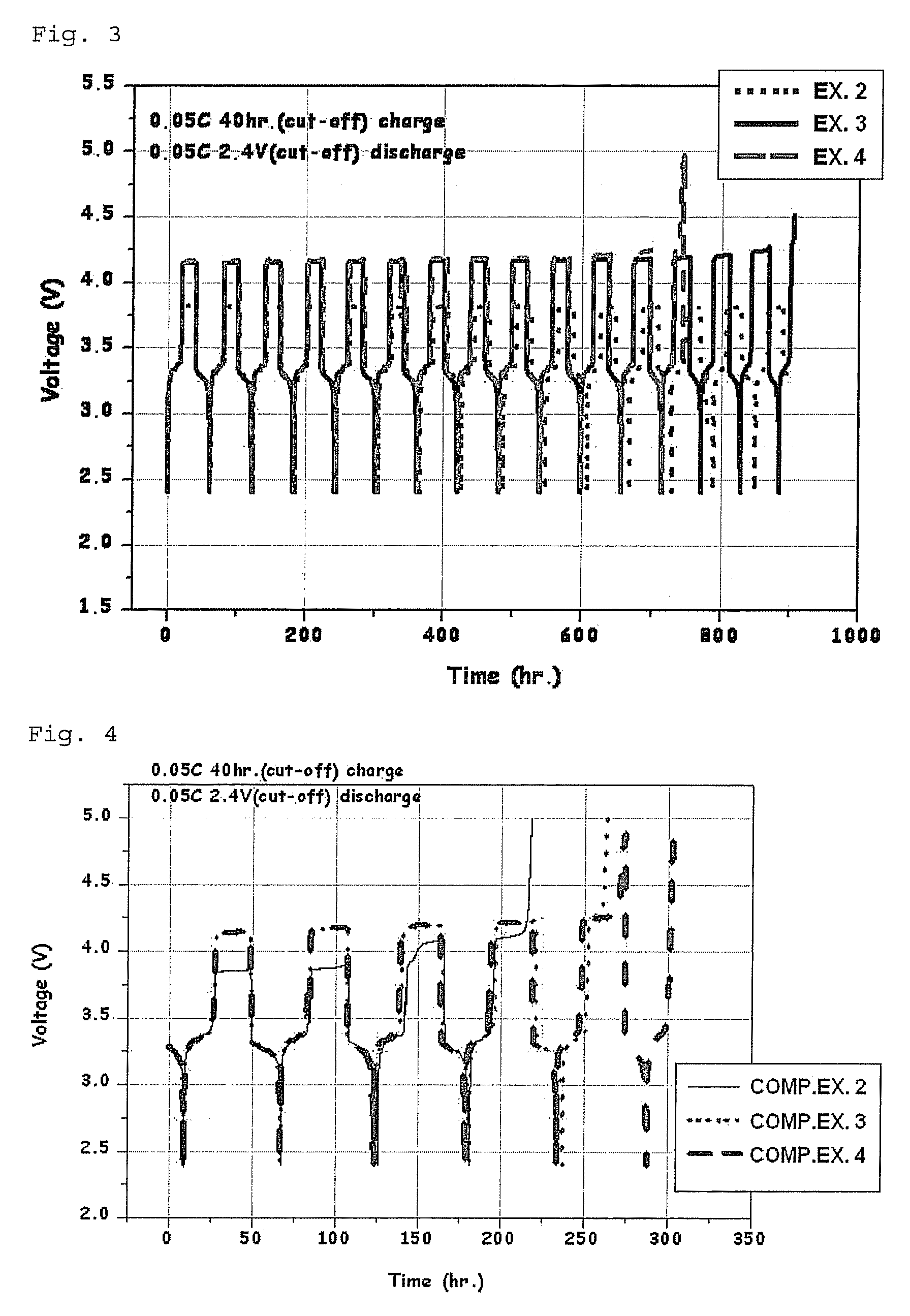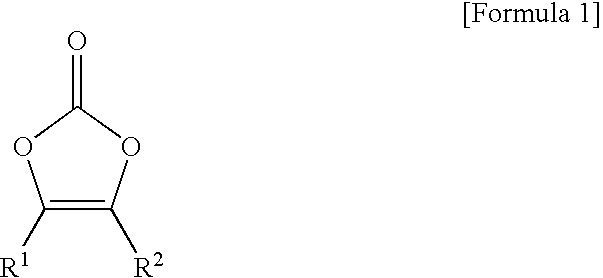Inhibitor of reduction of life cycle of redox shuttle additive and non-aqueous electrolyte and secondary battery comprising the same
a technology of additives and redox shuttles, which is applied in the field of inhibitors of the life cycle reduction of redox shuttle additives and non-aqueous electrolyte and secondary batteries comprising the same, can solve the problems of increasing the capacity density of batteries, increasing the temperature of cathodes and anodes, and increasing the cost of battery production, so as to inhibit the life cycle reduction and suppress side reactions.
- Summary
- Abstract
- Description
- Claims
- Application Information
AI Technical Summary
Benefits of technology
Problems solved by technology
Method used
Image
Examples
example 1
[0051]LiPF6 was dissolved to a concentration of 1M in a non-aqueous solvent having a composition of ethylene carbonate (EC): ethyl methyl carbonate (EMC)=1:2(v:v). Then, 1 part by weight of vinylene carbonate and 3 parts by weight of 1,3-propene sultone were added to 100 parts by weight of the solution, thus preparing an electrolyte.
[0052]90 parts by weight of LiFePO4 as a cathode active material, 5 parts by weight of acetylene black as a conducting agent, and 5 parts by weight of PVDF as a binder, were mixed with each other, and then added to NMP (N-methyl-2-pyrrolidone), to form cathode slurry. The slurry was applied on an aluminum (Al) collector and dried, thus preparing a cathode.
[0053]95 parts by weight of artificial graphite as an anode active material, and 5 parts by weight of PVDF as a binder were added to NMP to form anode slurry, which was then applied on a copper (Cu) collector and dried, thereby preparing an anode.
[0054]A polyolefin-based separator was interposed between...
example 2
[0055]A battery was fabricated in the same manner as in Example 1, except that the electrolyte was prepared by dissolving LiPF6 to a concentration of 1M in a non-aqueous solvent having a composition of ethylene carbonate (EC): ethyl methyl carbonate (EMC)=1:2 (v:v), adding 1 parts by weight of vinylene carbonate and 3 parts by weight of 1,3-propene sultone to 100 parts by weight of the solution, and adding 2 parts by weight of 2,5-ditertbutyl-1,4-dimethoxybenzene as a redox shuttle additive thereto.
example 3
[0056]A battery was fabricated in the same manner as in Example 1, except that the electrolyte was prepared by dissolving LiPF6 to a concentration of 1M in a non-aqueous solvent having a composition of ethylene carbonate (EC): ethyl methyl carbonate (EMC)=1:2 (v:v), adding 1 part by weight of vinylene carbonate and 3 parts by weight of 1,3-propene sultone to 100 parts by weight of the solution, and adding 5 parts by weight of 1,4-difluoro-2,5-dimethoxybenzene as a redox shuttle additive thereto.
PUM
| Property | Measurement | Unit |
|---|---|---|
| current intensity | aaaaa | aaaaa |
| weight | aaaaa | aaaaa |
| non-aqueous | aaaaa | aaaaa |
Abstract
Description
Claims
Application Information
 Login to View More
Login to View More - R&D
- Intellectual Property
- Life Sciences
- Materials
- Tech Scout
- Unparalleled Data Quality
- Higher Quality Content
- 60% Fewer Hallucinations
Browse by: Latest US Patents, China's latest patents, Technical Efficacy Thesaurus, Application Domain, Technology Topic, Popular Technical Reports.
© 2025 PatSnap. All rights reserved.Legal|Privacy policy|Modern Slavery Act Transparency Statement|Sitemap|About US| Contact US: help@patsnap.com



